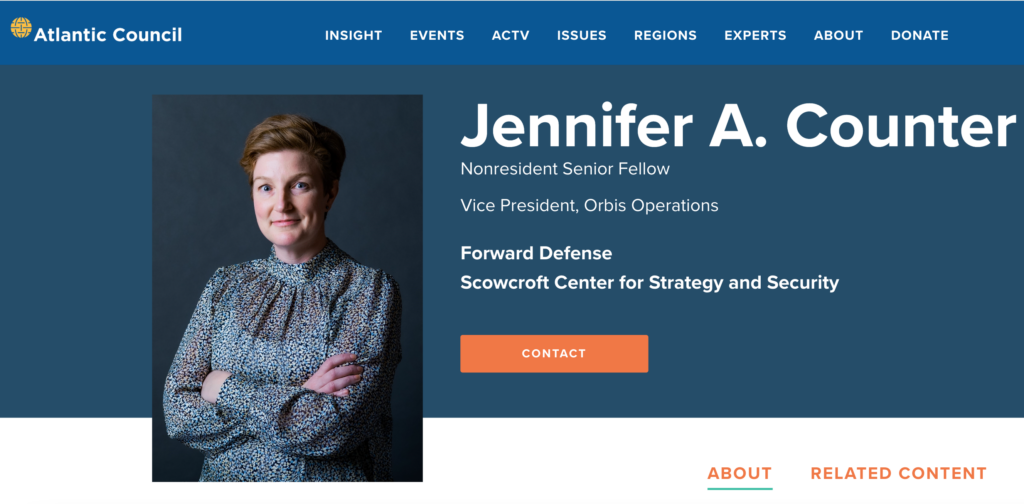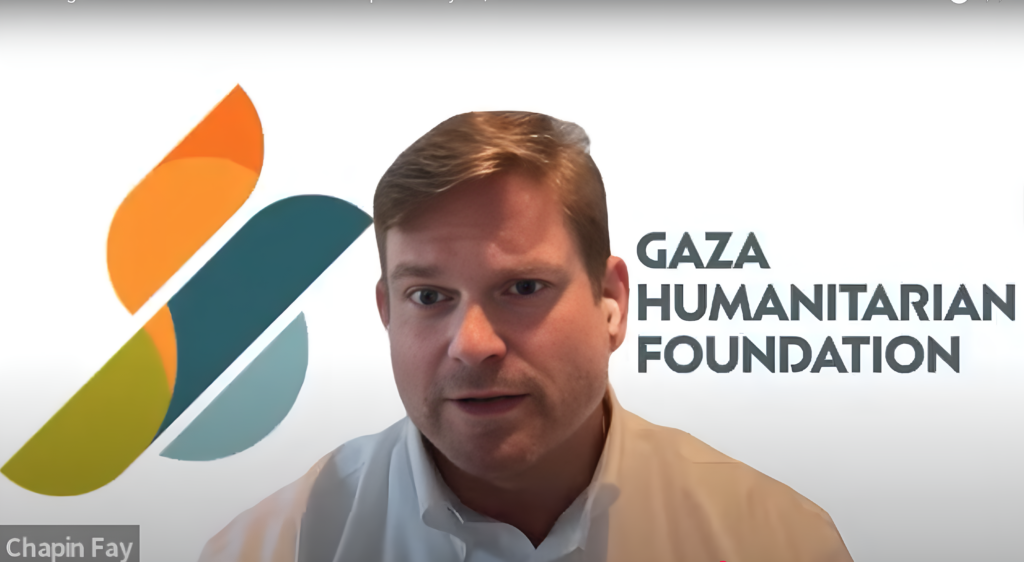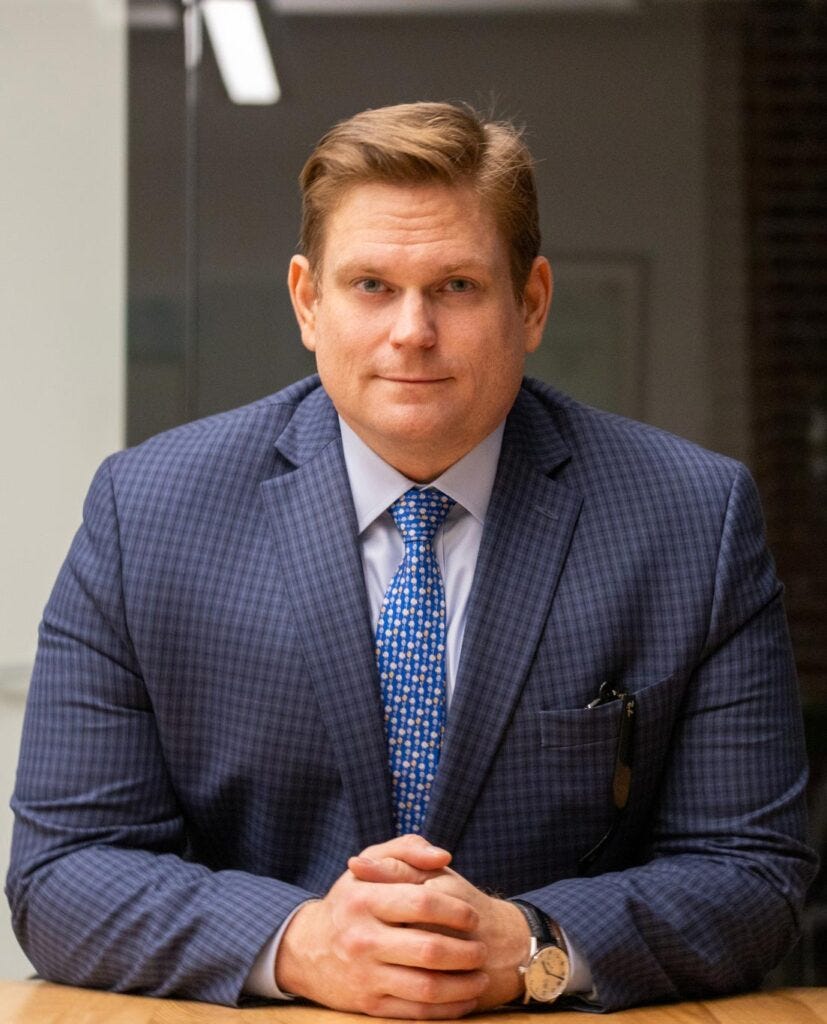The Gaza Humanitarian Foundation: The Intersection of Information Warfare and Humanitarian Aid

On Jul 11, 2025, independent journalist Jack Poulson, the author of the All-Source Intelligence newsletter, who often publishes reports on topics related to national security and information warfare, revealed that “Gaza Humanitarian Foundation’s private military contractor hires crisis comms firm led by former Biden and Obama spokespersons.” In light of the significant controversy, highlighted by an Associated Press report that includes a whistleblower from UG Solutions, a US security contractor hired by the Gaza Humanitarian Foundation (GHF), the company has engaged the crisis communications firm Seven Letter. As the hunger crisis in Gaza becomes more evident, the Gaza Humanitarian Foundation has sought the expertise of strategic communications professionals to ‘redirect blame and foster a narrative of success”, all while undermining the current UN aid framework in Gaza.
Other names outside of “Seven Letter” have also caught the eyes of journalists and researchers. For instance, Jennifer Counter, an expert in information warfare and a former Vice President at Orbis Operations, the company that created GHF, started to emerge. According to her LinkedIn profile, Counter is a full-time “Subject Matter Expert” for GHF’s primary security contractor in Gaza, Safe Reach Solutions (SRS). SRS is owned by a Wyoming-based trust whose beneficiary is McNally Capital. She also teaches strategic communications, offensive influence and intelligence at Columbia University in New York. Interestingly, Counter happens to be a Nonresident Senior Fellow at the Atlantic Council. Her profile indicates that she served as a foreign service officer in the Regional Affairs Office of the US State Department and was also an intelligence officer with the US Air Force. During her time at the State Department, she dedicated a significant portion of her work to strategic communications, collaborating with grassroots civil society organisations and media outlets to promote US policy positions.

IMAGE: Jennifer A. Counter, Nonresident Senior Fellow at Atlantic Council – Vice President, Orbis Operations (Source: Atlantic Council)
Jasper Nathaniel, the editor of infinitejaz.substack, who publishes a weekly dispatch on Israel/Palestine, including stories from inside the West Bank and other OPT areas, has analysed Jennifer Counter’s tactics and posted an interesting thread about his findings on X, on July 26, 2025.
My jaw is still on the fucking floor after reading Jenn Counter’s “Rules of Offensive Influence” — an unapologetic playbook for psychological warfare — that is published on Columbia’s website.
I’m going to share some excerpts, then post the whole thing.
As you read, keep in… https://t.co/wEEgTs6r1h
— jasper nathaniel (@infinite__jaz) July 25, 2025
Another interesting character worth examining is Chapin Fay, GHF’s spokesperson in Gaza. Fay is the Founder and CEO of crisis management and strategic communications consultancy firm Lighthouse Public Affairs. He is a high-level media strategist, political consultant, and crisis counsellor for Fortune 500 companies, non-profits, advocacy organisations, governments, and political candidates—he has been a Republican operative for many years. In 2022, Actum LLC, one of the fastest-growing public global consulting firms in the United States, announced that Chapin Fay had joined the New York office as a Managing Director. Fay has managed or advised dozens of campaigns from local elections to U.S. Senate and Presidential races, including Jewish Republican Zeldin’s campaign for Congress in 2014, Zeldin who is considered as one of the most dedicated supporters of Israel in Congressis, is a former Army intelligence officer and the 17th administrator of the Environmental Protection Agency (EPA) since January 29, 2025. Previously, Fay has also served as Press Secretary and Director of Public Affairs for New York Governor George E. Pataki.
When examining Chapin Fay’s involvement at GHF, it becomes apparent that he was recruited to assist the foundation in managing the escalating crisis triggered by damning footage, images and testimonies from various whistleblowers associated with US security contractors operating under GHF and IDF in Gaza.

IMAGE: Chapin Fay briefing: Gaza Humanitarian Foundation Update July 25, 2025 (Source: GHF)
It is now clear that GHF represents a complicated web of private security companies populated by ‘trigger happy’ paramilitary and intelligence operatives, backed by communications strategists, spin doctors, and their politicised organisations, who often use influencing techniques such as ‘framing.’
While images of famine and malnourished children in the Gaza Strip have flooded mainstream media and social platforms, the Gaza Humanitarian Foundation has engaged strategic communications specialists to redirect blame and foster a narrative of achievement. This effort comes as they deny their involvement in sabotaging the United Nations’ food distribution capabilities, aiding in the process, Israel’s attempt to reduce the UN Humanitarian footprint, which is inconveniently (for Israel) promoting the right of return for Palestinian refugees. GHF aid distribution mechanisms seem to accelerate the unlawful displacement of a starving Palestinian population that requires not just food, but also urgent medical attention…
VIDEO: Whistleblower VINDICATED After GHF Smear Campaign – Jasper Nathaniel’s interview with Breaking Points (Source: Breaking Points)
.
Jasper Nathaniel reports for Drop Site News…
The Information Warfare Consortium Shaping GHF’s PR Offensive
As the famine in Gaza becomes undeniable, the Gaza Humanitarian Foundation has relied on strategic communications specialists to reassign blame and push a narrative of success.
The U.S.- and Israeli-backed Gaza Humanitarian Foundation (GHF) has been touted by the Trump administration as a “humanitarian” fix for food distribution in Gaza, even as Israeli forces have killed at least 1,239 Palestinians seeking aid, including more than 40 killed today, based on the Gaza Health Ministry’s figures. Israel has meanwhile engineered mass starvation in Gaza—exacerbated by the full-spectrum blockade imposed in March and militarised through the GHF takeover of “aid distribution” by late May.
Immediately after the GHF began its operations, starving Palestinians were killed by Israeli forces on a daily basis at, or near, GHF distribution hubs, where meager rations of food were located in remote militarised zones. Now that famine conditions have become undeniable, the GHF’s narrative has evolved from casting its operations as highly successful in distributing aid to also acknowledging the deteriorating situation, while the GHF continues to obfuscate its own role and deflect blame.
On July 29, GHF claimed on X that “A common misconception about GHF is that we were established to replace the @UN and traditional aid organisations. That is not the case.” They added that the GHF “secured a commitment from Israel to allow aid into Gaza under the existing mechanisms, including the UN.” But, on July 9, after an aid massacre, the GHF suggested its role had replaced that of the UN, stating “Hamas wants GHF out of Gaza and the UN back in so it can once again control the food supply.”
From the earliest days of the war, experts in offensive influence, public relations, and crisis communications have worked to delegitimise Gaza’s existing UN aid network, casting it as corrupt and ineffective. Earlier this year, they promoted replacing it with GHF’s militarised system that was aligned with Israeli political aims and asserted the GHF’s role as a “humanitarian” organisation—and as the only safe and scalable solution for delivering aid across the enclave. Since its launch, a persistent information warfare apparatus has been operating behind the scenes to manage public perception and preserve the GHF’s function as an instrument of Israeli policy.
On July 17, the GHF’s X account posted a graph purporting to show a “predictive pattern: the more meals GHF delivered, the more it was attacked in media and online chatter.” The account alternated between celebrating its supposed success in delivering millions of meals, attacking the media, dismissing “Hamas disinformation” about the near-daily massacres around aid sites, and accusing the UN of being at once infiltrated by Hamas, incapable of delivering aid, and unwilling to cooperate.
Then, on July 22, as images and testimony of starving Palestinians made international headlines, a GHF post on X featured a letter to the UN from its director, Johnnie Moore—a Trump-allied evangelical minister and public relations professional—that said: “The humanitarian situation in Gaza continues to deteriorate.” Moore then bemoaned the closure of 400 UN aid points across the enclave—the ones shut down by Israel and replaced by the GHF—and he claimed that aid trucks were sitting idle and food was expiring, while calling for “collaboration between GHF and UN aid efforts.”
That same day, the far-right website Breitbart published an “exclusive” story about the idle trucks. An accompanying video features GHF spokesperson Chapin Fay standing in front of UN-marked trucks, claiming they were “laden with food and aid left to spoil.” He blamed the UN for failing to deliver the aid, adding it was not about access but about execution. The Breitbart story alleged that the UN “has an interest in GHF failing,” and that it “is no longer capable of delivering aid to Gaza, partly because its trucks are looted [by Hamas]—and partly because some of its drivers work with Hamas.” The video ends with an appeal to the UN “to work with the GHF, instead of against it.”
Hours later, the IDF’s International Spokesperson Lieutenant Colonel Nadav Shoshan published an aerial video that he claimed showed “950 trucks worth of aid, currently waiting in Gaza for international organisations to pick up and distribute to Gazan civilians.”
Pro-Israel media outlets amplified the new talking points that acknowledged a deepening hunger crisis but pinned the blame on the UN. Fox News ran a headline, “US-backed org sounds the alarm over abandoned aid for Gaza, calls for UN collaboration.” The Forward wrote, “Head of embattled Gaza aid program tells Jewish group starvation is ‘real’—but blames the United Nations and Hamas.” The Jerusalem Post wrote, “IDF: No famine in Gaza, but if UN keeps holding back 950 trucks, could be.”
Israel’s Hasbara communications kicked into full gear, as popular pro-Israel X users began sharing the aerial video with a near-identical caption. The posts all included the claim of “950 trucks.” Most described how the aid was “rotting in the sun.” Nearly all repeat the same phrases—“inspected and approved by Israel,” “on the Gazan side of the Kerem Shalom crossing,” “the UN refuses to distribute them.” Some posts were verbatim copies; others swapped in slight variations like “sit decaying” or “obscene amount of aid,” but the core language remained uniform. On Thursday, US Ambassador to Israel Mike Huckabee and AIPAC shared the video on X with the same message.
Since Israel dismantled the aid network overseen by the UN and imposed a full-spectrum blockade on March 2, it has barred UN access, layered on logistical and bureaucratic obstacles, and opened fire on crowds gathering at UN convoys, including on July 20, when Israeli forces killed 81 people. Senior Israeli military officials have now admitted they found no evidence Hamas systematically stole UN aid—a justification for dismantling UNRWA—and acknowledged that the UN’s delivery system was largely effective in reaching Gaza’s starving population. Meanwhile, an internal US government analysis also found no evidence of systematic theft by Hamas of U.S.-funded humanitarian supplies.
With the new message out, pro-Israel politicians, influencers, and media outlets began openly acknowledging starvation in Gaza for the first time, despite over a year of warnings about the eventuality from international humanitarian organisations. On May 10, 2025, the Integrated Food Security Phase Classification (IPC)—the world’s leading authority on food emergencies—found that the entire territory was at “critical” risk of famine. Days before that, The Free Press had run a piece titled “The Gaza Famine Myth.” But, last Thursday, as the narrative turned, The Free Press published an article by Amit Segal—described by The New Yorker’s David Remnick as “a kind of messenger for [Netanyahu’s] thinking”—declaring that while “there have been tremendous lies,” now the starvation threat was real.
The narrative push reached its apex at the end of last week with back-to-back Wall Street Journal op-eds. The first by Yasser Abu Shabab—the leader of an Israeli-backed militia in Gaza that the UN has accused of looting aid convoys under Israel’s watch—cast his group as a pragmatic, homegrown partner in restoring order. He painted the UN as an institution infiltrated by Hamas, claiming it “still controls aid access and dominates institutions like the U.N. Relief and Works Agency,” and promoted Israel’s so-called “humanitarian city” plan. “We have already received requests from many families to relocate to eastern Rafah.… Within months, more than 600,000 people—nearly a third of Gaza’s population—could be living outside the cycle of war,” Shabab wrote, though Israeli news reports have claimed he’s illiterate.
The next day, GHF Director Johnnie Moore followed with his own op-ed, “The Gaza Humanitarian Foundation Can Feed Starving Gazans,” presenting the organisation as the only actor capable of feeding Gaza “securely and at scale.” His message combined urgency with a forward-looking appeal: “If there was ever a time for unity over bureaucracy, courage over caution, pragmatism over politics, and mission over ego, it is now,” Moore wrote. “To the UN and others across the humanitarian community, we say: Our door is open.”
The “Humanitarian” Efforts of Chapin Fay and Jenn Counter
On July 16, as reports began to circulate of a stampede at a GHF site that left at least 21 dead, a new representative appeared in a video published on the GHF’s X page: Chapin Fay. Introducing himself as a spokesperson for the GHF, Fay described that morning’s incident as a “calculated provocation” by Hamas operatives who had allegedly infiltrated the crowd to sow chaos and undermine the GHF. He denied that guards used tear gas, despite widespread reports to the contrary, and claimed only warning shots had been fired.
Fay quickly became a regular presence on the GHF’s X page. On July 20, the day Israeli forces massacred 81 people at a UN aid convoy, he made his first appearance in Gaza, wearing a bulletproof vest and flanked by smiling Palestinian families at the GHF’s Khan Younis distribution hub, where he claimed the team had delivered over 2 million meals. Fay claimed the GHF had set aside boxes so women and children could access them safely, and they soon promoted a “Women’s Only” day at the Saudi district GHF aid site, where Israeli forces shot two women dead. The GHF’s video from that day shows women “expressing their gratitude for our efforts.” Fay uses his video appearances on the ground in Gaza and from a studio in Tel Aviv to promote the GHF’s talking points—the “successful” aid deliveries, the “grateful Palestinians,” the “abandoned” UN aid trucks, the Hamas “disinformation” campaign—and to deny any GHF role in the regular shootings or the deepening starvation.
There’s no record of Fay working in humanitarian aid before this month. On LinkedIn, where his headline reads “Warrior Poet,” he describes himself as a “high-level media strategist, political consultant and crisis counselor,” and says he’s been running Lighthouse Public Affairs since 2020. A longtime Republican operative, Fay worked on Lee Zeldin’s 2013–2014 congressional campaign; Zeldin—who currently serves as EPA administrator in the Trump administration—would go on to become one of Israel’s staunchest supporters in Congress. In 2019, City & State named Fay New York’s top Republican consultant. As recently as four months ago, he appeared on Bloomberg Television as a “Republican Strategist” to defend Robert F. Kennedy Jr.’s sweeping cuts to Health and Human Services. Fay did not respond to Drop Site News’s request for comment on this article.

IMAGE: Chapin Fay’s promotional picture as the CEO of Lighthouse Public Affairs, a PR firm specialising in strategic communications. (Source: Lighthouse Public Affairs Website)
The GHF’s aid effort has been orchestrated by a web of private contractors and politically connected firms. Several figures have worked at entities involved in both the design and implementation phases, including Jenn Counter, an Air Force veteran and self-described strategic communications expert who “builds offensive campaigns that force adversaries into a defensive role.” She was a longtime vice president at Orbis Operations, the intelligence contractor that worked with Israeli authorities to design the GHF as early as January 2024. In November, Orbis spun out a new company, Safe Reach Solutions (SRS), created to take over implementation by serving as the GHF’s primary contractor inside Gaza, solidifying the closed loop of influence in which the very people who designed the GHF are now running it. Former Orbis VP and CIA officer Philip Reilly became SRS’s CEO, and two months later, Counter followed Reilly to SRS and joined as a “Subject Matter Expert.”
In addition to her work with the militarised aid operation in Gaza, Counter serves as a senior fellow at the Atlantic Council’s Forward Defense group, which aims to “promote an enduring military advantage for the United States, its allies, and partners.” The group, per the Council’s promotional material, “facilitates government and private sector collaboration to strengthen the defense industrial base, overcome barriers to innovation adoption, and navigate resource tradeoffs to field capabilities in relevant timeframes.”
In December 2024, as the Orbis-designed “humanitarian” plan transitioned into its operational phase under Safe Reach Solutions—one month before Counter made the jump—she co-authored a piece for the Council titled “Over-the-horizon counterterrorism does not work. It’s time for a new approach.” She argued that the U.S. withdrawal from Afghanistan in 2021 signalled to terrorist groups that the West had moved on, and that intelligence and counterterrorism resources had thinned dangerously. “The ongoing fighting between Israel and the consortium of Hezbollah, Hamas, the Houthis, and various Sunni groups such as the Palestinian Islamic Jihad,” she wrote, “inspires and mobilises previously dormant or undermanned groups globally, providing a rallying call against Western interests.” She called for rebuilding source networks through partnerships with local security services, funding grassroots groups to weaken militant recruitment, and supporting Israeli efforts to degrade regional threats.
Counter’s writing frames foreign civilian environments, especially conflict zones, as strategic sites for intelligence gathering and advancing the U.S.’s national security interests. That framing appears consistent with how the GHF operates on the ground. A contractor for UG Solutions, the private security firm working at GHF sites, told the Associated Press that cameras monitor each distribution point in real time, with American analysts and Israeli soldiers watching the feeds together in a control room. Some of the video streams, he said, are labeled “analytics” and equipped with facial recognition software.
In one of Counter’s LinkedIn posts, she argued that in conflicts like Gaza, “it doesn’t matter what the details are” because people “fit the narrative to what they want to believe”—in that case, whether the IDF was responsible for civilian deaths. She highlighted claims that Hamas steals aid and resells it at inflated prices, and criticised the UN for failing to “name and shame Hamas” the way it does Israel. She praised Israel’s “hybrid warfare” pager attack in Lebanon—which killed and maimed civilians and violated international law—writing that her “intel officer side… is in awe that it actually worked.” During the height of the campus protests in the U.S., she questioned whether student activists were receiving outside funding.
Counter is also a course associate in Columbia’s School of Professional Studies’ Strategic Communications department—where she also graduated from—which boasts that it develops “the next generation of leaders in the global communication field.” She’s been with the university since 2020 and is scheduled to teach a class this fall. A Columbia official confirmed these details, noting that while Counter is not the lead instructor and doesn’t develop the curriculum, she does engage directly with students.
On her faculty page, where students considering her class would find her bio, there is an article she authored in 2021: “Rules of Offensive Influence.” “Influence is a long-term effort and inherently political in nature, not a one-off event that is grounded in military objectives,” Counter writes in the piece originally published on Strike Source. “Even tactical military propaganda should support a longer-term strategy and goal to be most impactful.”
She then offers 16 rules for creating, implementing, and adapting offensive influence campaigns: a playbook that closely tracks the effort to delegitimise the UN’s existing aid network, install the GHF in its place, and control the humanitarian narrative in Gaza. She advises practitioners to “use divides in society to build support, seed dis- and misinformation to mislead and manipulate, and co-opt community groups to do what you want.” Campaigns should focus on a few emotionally charged concepts “based on historical ills that plague the group,” and then A/B tested for impact and used to “discredit the adversary and their place within the community.” Messaging should be layered across platforms, voiced by different actors—including local figures, politicians, and members of civil society—and rotated to keep the adversary “always on the defensive. The goal is not to counter your adversary. Your goal is to dominate your adversary,” denying them the “time, bandwidth, or opportunity” to advance their own narrative.
Counter also stresses the need to “plan to fill the power vacuum… The backfill needs to be established and ready to go well before the adversary is” removed. The negativity, she writes, must “be balanced with the hope that is your vision for the future. People want things to be better, and your … system is the answer.” Nowhere in the piece is there any reference to ethical limits or moral considerations.
Reached for comment, Safe Reach Solutions said, “Jenn Counter’s work has nothing to do with public relations.” Counter did not respond to a request for comment from Drop Site.
Columbia and Academics for Genocide
The student activists at Columbia—like countless others around the world—warned from the start that Israel was waging a war of extermination in Gaza. The footage and testimony by Palestinians in Gaza made it plain. So did the statements from Israeli leaders. The media, rather than focus on the substance of the protests and the often violent crackdown on the encampments, disproportionately covered isolated incidents of antisemitism and disorder, and centred students who claimed the demonstrations made them feel unsafe. Today, with more than 60,000 killed in Gaza (a figure widely acknowledged to be a vast undercount), mass starvation deepening under a months-long blockade, and no ceasefire in sight, many of the students whose warnings now appear prescient have faced disciplinary action.
On July 22, Columbia expelled or suspended more than 70 student activists for peacefully occupying a campus library. Many of them have struggled to find work and internships after they were doxxed and baselessly accused of antisemitism and support for terror.
Meanwhile, Jenn Counter, an information warfare specialist tied to two firms behind Gaza’s militarised aid operation, remains employed by Columbia. Asked to comment, a Columbia official declined to address any aspects of the story outside of confirming her employment details. When pressed on whether the university considers what part-time faculty do outside the classroom—just as it scrutinises students—the official replied only: “It’s pretty common for our part-time employees to have other jobs.”
This fall, Counter is scheduled to teach strategic communications at Columbia once again—now with a new case study in hand.
See more news from Drop Site News
READ MORE PALESTINE NEWS AT: 21st Century Wire PALESTINE Files
SUPPORT OUR INDEPENDENT MEDIA PLATFORM – BECOME A MEMBER @21WIRE.TV
VISIT OUR TELEGRAM CHANNEL
21st Century Wire is an alternative news agency designed to enlighten, inform and educate readers about world events which are not always covered in the mainstream media.
Source: https://21stcenturywire.com/2025/08/06/the-gaza-humanitarian-foundation-the-intersection-of-information-warfare-and-humanitarian-aid/
Anyone can join.
Anyone can contribute.
Anyone can become informed about their world.
"United We Stand" Click Here To Create Your Personal Citizen Journalist Account Today, Be Sure To Invite Your Friends.
Before It’s News® is a community of individuals who report on what’s going on around them, from all around the world. Anyone can join. Anyone can contribute. Anyone can become informed about their world. "United We Stand" Click Here To Create Your Personal Citizen Journalist Account Today, Be Sure To Invite Your Friends.
LION'S MANE PRODUCT
Try Our Lion’s Mane WHOLE MIND Nootropic Blend 60 Capsules
Mushrooms are having a moment. One fabulous fungus in particular, lion’s mane, may help improve memory, depression and anxiety symptoms. They are also an excellent source of nutrients that show promise as a therapy for dementia, and other neurodegenerative diseases. If you’re living with anxiety or depression, you may be curious about all the therapy options out there — including the natural ones.Our Lion’s Mane WHOLE MIND Nootropic Blend has been formulated to utilize the potency of Lion’s mane but also include the benefits of four other Highly Beneficial Mushrooms. Synergistically, they work together to Build your health through improving cognitive function and immunity regardless of your age. Our Nootropic not only improves your Cognitive Function and Activates your Immune System, but it benefits growth of Essential Gut Flora, further enhancing your Vitality.
Our Formula includes: Lion’s Mane Mushrooms which Increase Brain Power through nerve growth, lessen anxiety, reduce depression, and improve concentration. Its an excellent adaptogen, promotes sleep and improves immunity. Shiitake Mushrooms which Fight cancer cells and infectious disease, boost the immune system, promotes brain function, and serves as a source of B vitamins. Maitake Mushrooms which regulate blood sugar levels of diabetics, reduce hypertension and boosts the immune system. Reishi Mushrooms which Fight inflammation, liver disease, fatigue, tumor growth and cancer. They Improve skin disorders and soothes digestive problems, stomach ulcers and leaky gut syndrome. Chaga Mushrooms which have anti-aging effects, boost immune function, improve stamina and athletic performance, even act as a natural aphrodisiac, fighting diabetes and improving liver function. Try Our Lion’s Mane WHOLE MIND Nootropic Blend 60 Capsules Today. Be 100% Satisfied or Receive a Full Money Back Guarantee. Order Yours Today by Following This Link.






